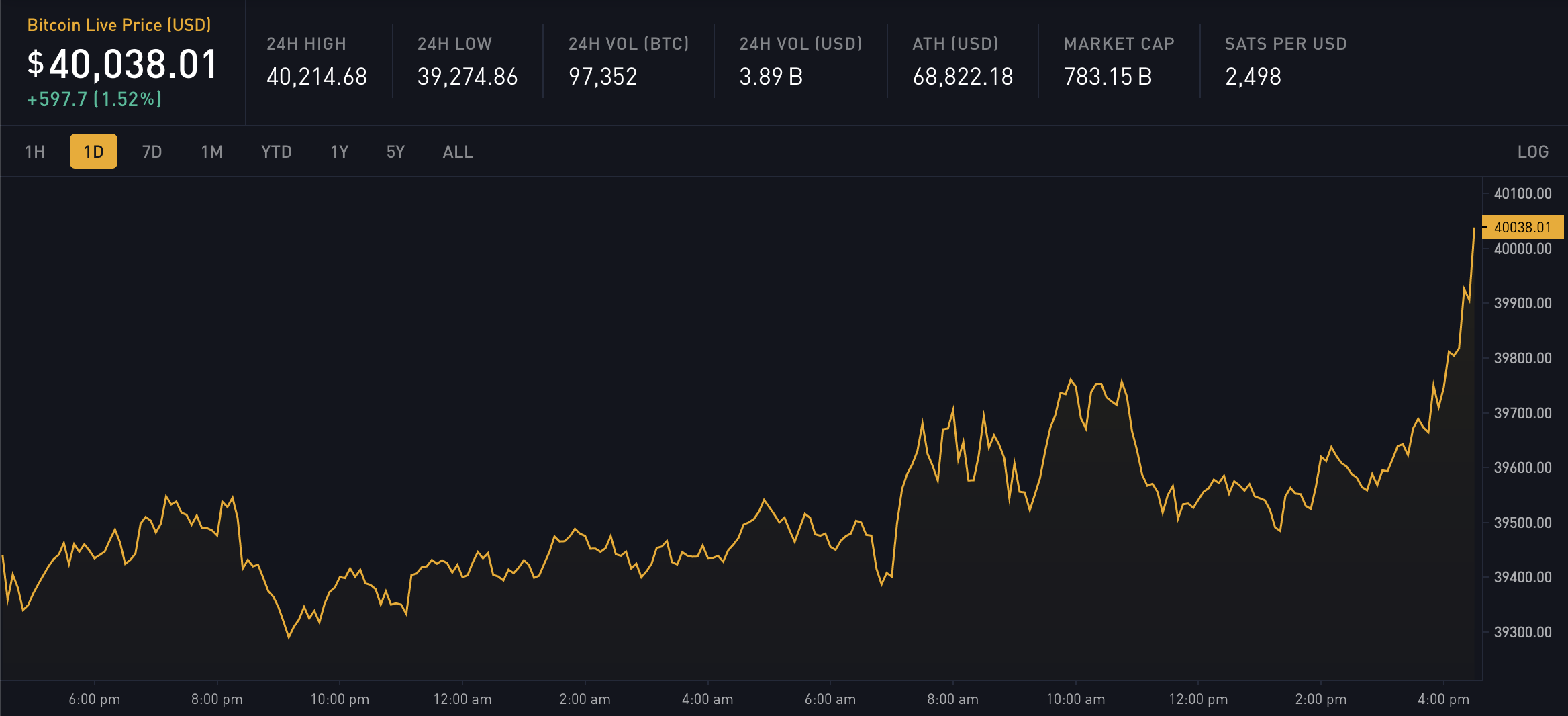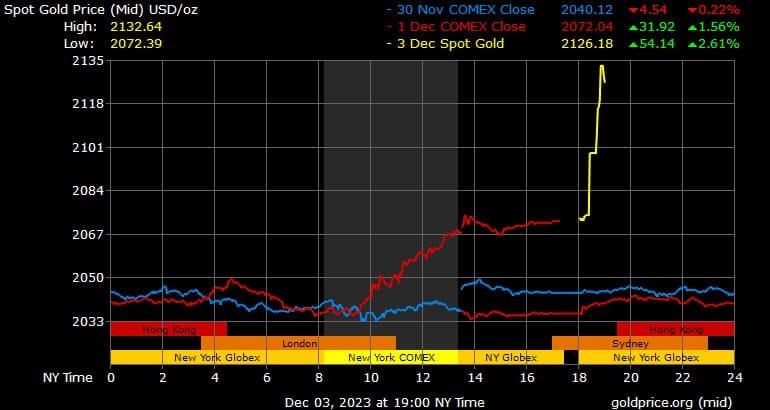

Bitcoin gets back to $40,000 for the first time since May of 2022 during the same week that gold hits a new all-time high.

For the first time since May 0f 2022 the price of bitcoin is higher than $40,000. This resurgence above $40,000 coincides with gold reaching new all time highs earlier this week and the banking sector wrestling with rumors of liquidity challenges, particularly at UBS and Deutsche Bank. The coinciding of these events signals to us that there are issues in the banking system that are causing people to seek the safety of assets that operate external to the intertwined banking system.
Gold, often regarded as the archetypal safe-haven asset, reached a new all-time high above $2,120. Surpassing its previous high set on August 6th, 2020. While gold isn't as well positioned as bitcoin to succeed as a hard asset in the digital age, the fact that it is sitting at new all time highs is indicative of a world beginning to appropriately price in geopolitical and sovereign debt risks.

The looming possibility of a Bitcoin ETF approval stands to open the floodgates for a wave of institutional capital that is currently afraid to get exposure to bitcoin. There are currently 12 bitcoin spot ETFs waiting to be approved by the SEC. BlackRock, Grayscale, ARK Invest, and Fidelity are the higher profile firms vying to get this product to market. By increasing the optionality of avenues of exposure to bitcoin, it could usher in a fresh wave of investors. This development begs the question: how much will this alter bitcoin's price?
Meanwhile, the banking sector is grappling with apparent liquidity issues, driven mainly by a higher-for-longer rate regime that is putting stress on the value of banks' treasuries, which are held as liquid reserves. This raises critical questions about the stability of the banking sector, inadvertently casting bitcoin in a new light as an alternative store of value option. UBS is rumored to be experiencing liquidity issues in the wake of their acquisition of Credit Suisse, which came loaded with a bunch of toxic assets. There are also rumors that Deutsche Bank's massive derivatives exposure could put them in a precarious situation toward the middle of this month when a material part of their $42 TRILLION derivatives portfolio is set to mature.

Investors are quickly beginning to question whether or not it makes sense to hold bitcoin, an apolitical distributed peer-to-peer cash system with a fixed supply and no central controller, as a part of their portfolio to inoculate themselves from stress in the incumbent banking system. They are also falling back to the OG store of value, gold. This behavior mirrors a broader trend of asset diversification in times of uncertainty.
The economic implications of bitcoin's and gold's price surges, coupled with the banking sector's liquidity issues, are extensive. They stretch from influencing conversations around inflation to reshaping investment perspectives on what a safe asset is in the digital age, signaling significant shifts in the global financial landscape.
The comparison of bitcoin and gold is a common analysis in the investment world. Gold, due to its physical nature is harder to transfer and authenticate. On top of this, it's easier to centralize the gold supply into a few number of vaults. Bitcoin, due to its digital nature, is very easy to transfer and validate, and hard to centralize due to the fact that control isn't determined by how much bitcoin one holds, but the consensus of the network of distributed nodes.
Internationally, reactions to these financial shifts differ. Each country's stake in bitcoin, gold, and the banking sector shapes its economic strategies and market responses, reflecting an adversarial global financial landscape.
Technological advancements are pivotal in bitcoin's rise. Conversely, technology is also reshaping the traditional banking sector, influencing its current liquidity predicaments.
The portrayal of bitcoin's ascent, gold's new all time high, and the banking sector's issues in the media significantly sway investor sentiment and market trends. Public perception plays a critical role in these market movements.